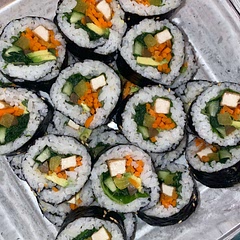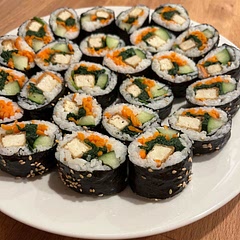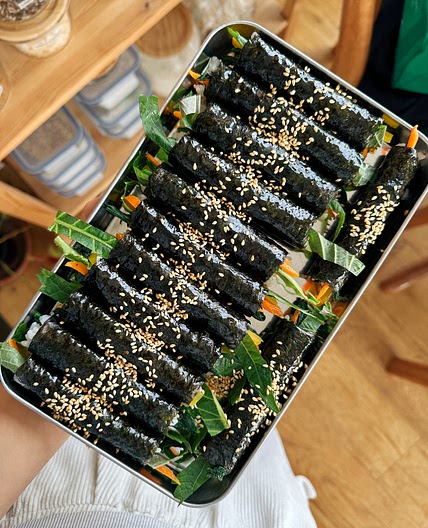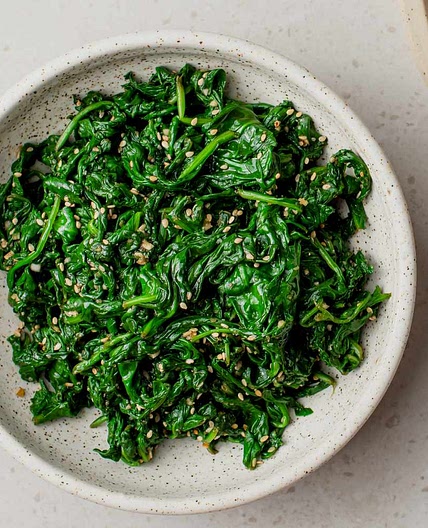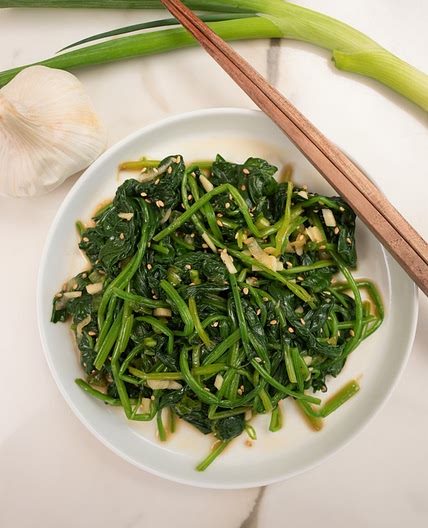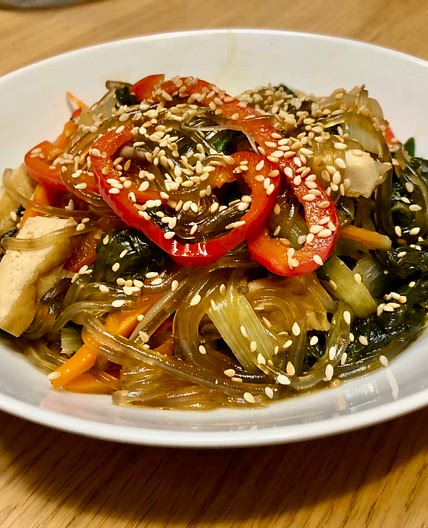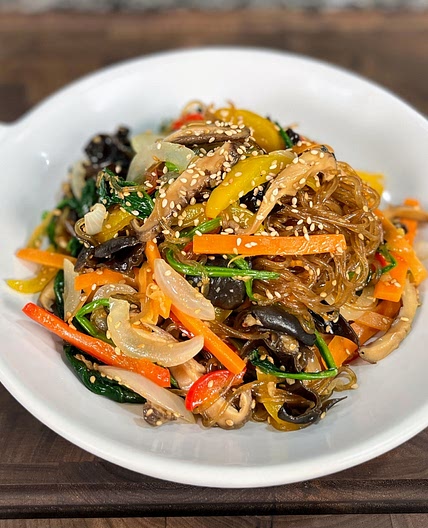
1/5

2/5

3/5

4/5

5/5
93%
2
By Liz Miu
Guide to Making Kimbap (Korean Seaweed Rice Rolls - not sushi!)
8 steps
Prep:40min
This is a rough guide to making Kimbap - Korean seaweed rice rolls! Measure and season with your heart, but here are some rough guidelines if you get lost!
Kimbap might LOOK like sushi but they are actually totally different in flavour. Sushi is also a broader category and the name technically refers to the vinegar-seasoned rice (not all sushi is in rolls) whereas Kimbap is seasoned with sesame oil which has a stronger, nuttier flavour. Whilst Kimbap may resemble maki sushi (rolls) they typically have more fillings, and some specific fillings like danmuji, korean pickled radish.
Please leave any questions in the comments!
Updated at: Wed, 16 Jul 2025 09:37:05 GMT
Nutrition balance score
Uh-oh! We're unable to calculate nutrition for this recipe because some ingredients aren't recognized.
Ingredients
4 servings
RICE
VEGETABLES
Instructions
THE THINGS YOU MUST COOK TO MAKE KIMBAP: CARROT, SPINACH, TOFU, AND RICE OF COURSE!
Step 1
CARROT must cut into matchsticks/julienned - sautée in a little oil and season with salt and cook til a little soft. If you don't cook carrot it's not kimbap! And don't grate the carrot - that's too thin.
Step 2
SPINACH must be cooked. Wash, remove the roots and blanch it in some boiling hot water for 1-2 minutes (pour boiling water over the spinach and let sit). Rinse with cold water and squeeze out as much water as humanly possible! Give the spinach a very rough chop and mix in 1-2 tsp sesame oil and some salt. If you don't cook and season your spinach it's not kimbap!
Step 3
TOFU - cut into 1cm thick sticks and pan fry on all sides until golden brown. Turn the heat off and drizzle a 1 tbsp soy sauce all over tofu, toss a little and then set aside.
Step 4
RICE - cook according to packet instructions. As soon as it's done turn transfer to a bowl and let sit for 10 minutes covered with a tea towel. Drizzle 1-2 tsp sesame oil and a good pinch of salt, mix well with a wet rice paddle or a wet wooden spoon - be careful not to mush the rice. Then let set until still slightly warm, but cool enough to handle. If you work with it while it's too hot and it will be too sticky and steamy and will rip your seaweed!
ASSEMBLY
Step 5
HAVE A BOWL OF WATER NEAR BY TO WET YOUR HANDS SLIGHTLY this prevents rice sticking to your hands, but too much water will make the seaweed soggy so you mainly only want to wet your hands when you will be handling the rice.
Step 6
Place 1 sheet nori shiny side down. Use wet hands to place rice on lower 2/3-3/4 of the nori sheet. Take your time and use your fingertips to disperse the rice in a thin layer - it does not need to be perfectly flat and the rice shouldn't be a thick layer, but aim for even distribution and coverage.
Step 7
Place your fillings in a line across the middle (see video) and take your time rolling the kimbap over to seal - this first roll is most important. Then finish rolling and let rest seam side down.
Step 8
Repeat until you have used all your rice. Brush with sesame oil and sprinkle on roasted sesame seeds and let rest for 5-10 minutes before slicing.
Notes
15 liked
1 disliked
Delicious
Easy
Fresh
Go-to
Makes leftovers
